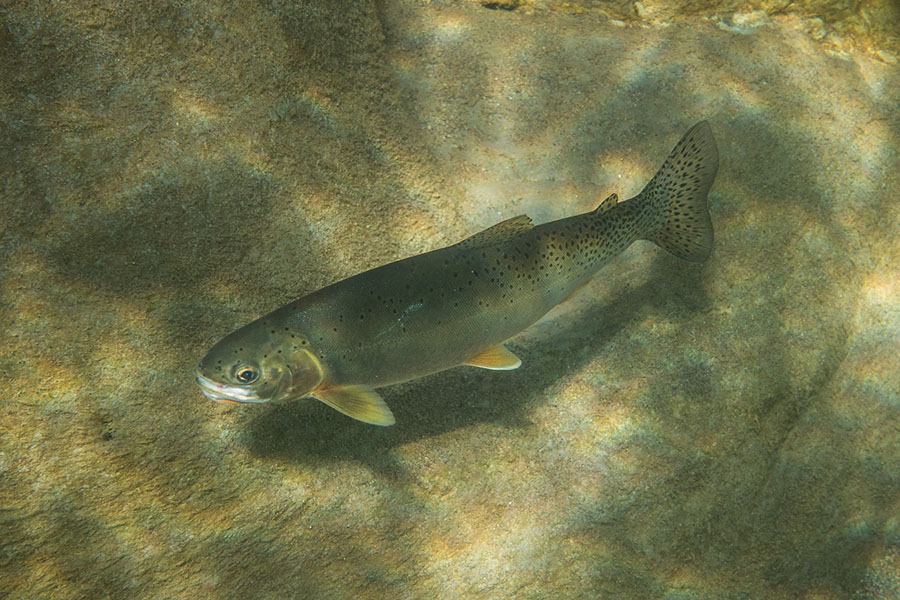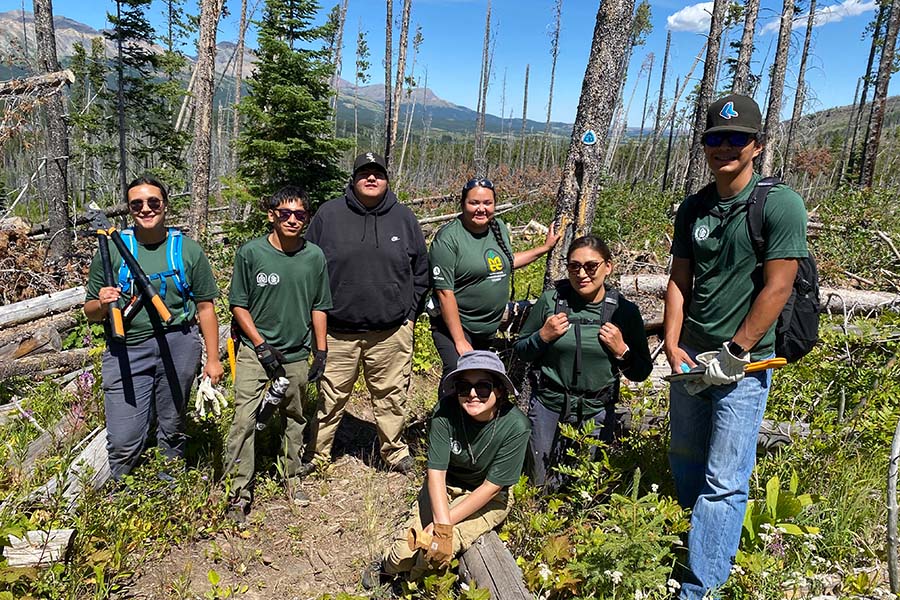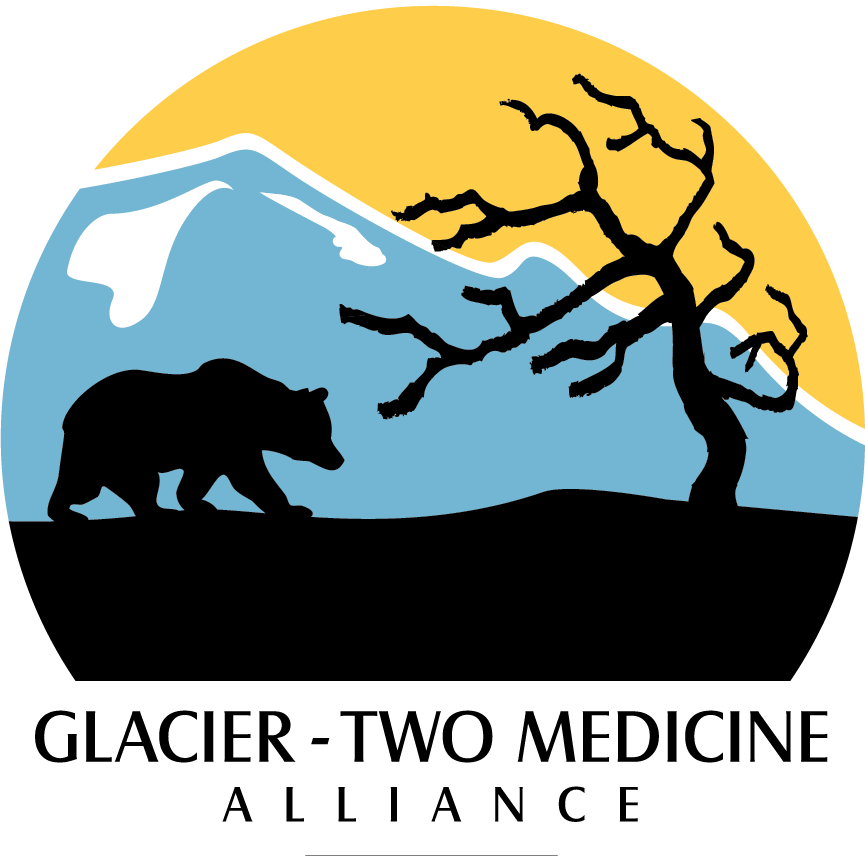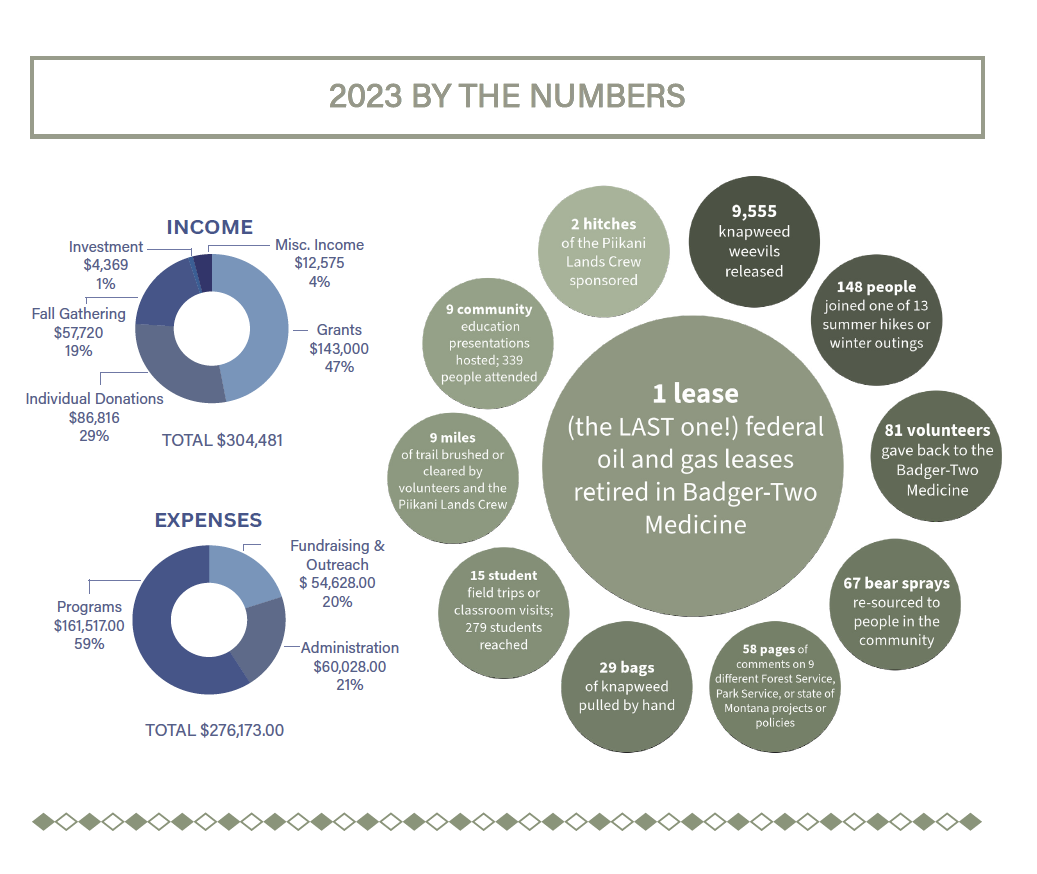Our Impact
We build a strong future for wildlands, wildlife and people across the central Crown of the Continent ecosystem.
Our Most Recent Accomplishments
In 2023, we secured our biggest win to date, the elimination of the last oil and gas lease in the Badger-Two Medicine, a testimony to the power and importance of local, grassroots commitment and our never give up attitude, plus important contributions to native species recovery and reconnecting youth to the land or cultural heritage.
Victory for the Badger-Two Medicine
Last Lease Retired!
In September, Glacier-Two Medicine Alliance and our Blackfeet and conservation partners announced we had reached a settlement agreement to retire the last oil and gas lease in the area, ending a nearly 40-year struggle to prevent development. A huge victory for the land, for the Blackfeet people, and for everyone who cherishes this wild and sacred place.

Improved Recovery of Native Trout in Glacier National Park
This past summer, Glacier National Park proposed a major fisheries project deep inside Glacier’s recommended wilderness that aimed to help preserve native westslope cutthroat and bull trout in the St. Mary’s watershed. Our advocacy successfully improved the project’s design and limited its impacts on the wilderness character of Glacier’s backcountry.

Piikuni Lands Crew Helps Heal the Badger-Two Medicine
The Piikuni Lands Crew is an all-Blackfeet conservation crew that helps youth and young adults connect to and care for ancestral lands, while gaining valuable conservation job skills, knowledge, and experience. This summer, we funded the crew to improve the ecological health and cultural use of the land by fighting noxious weeds and maintaining trails.
Our Latest Annual Report
Learn more about our work, our recent activities, and our financial position in our latest annual report. Older reports can be found here.
Major Historic Accomplishments
We have a strong track record of successfully empowering local, everyday people to defend the wild. Check out some of our most significant accomplishments to date:
No Oil and Gas Development in the Badger-Two Medicine
In the early 1980s the federal government issued 47 oil and gas leases in the Badger-Two Medicine without sufficient environmental review or consultation with the Blackfeet Tribe. When we organized to stop development, people said we’d never succeed. Despite many obstacles and setbacks over 39 years, we never gave up! Today, thanks to many people, Blackfeet leaders, and organizations, all oil and gas leases have been retired and the area made off-limits to future mining or exploration. And no development ever occurred!
A Quieter Glacier National Park
For years, low-flying helicopters on scenic overflights of Glacier National Park shattered the peaceful calm and natural sounds of Glacier’s backcountry that wildlife rely on to survive and visitors enjoy. In a major win for wildlife and natural soundscapes, and after years of pressure by the Quiet! Glacier Coalition, of which we are a part, Glacier National Park and the Federal Aviation Administration agreed in 2022 to phase out all commercial air tours by the end of this decade!
A Strong Forest Plan for the Helena-Lewis and Clark National Forest
The revised Land Management Plan for the 2.8 million-acre Helena-Lewis and Clark National Forest released in 2021 contains strong limitations on future road building, resource extraction, new structures, and motorized recreation in the Badger-Two Medicine area along with the most visionary guidance for tribal co-stewardship of national forest lands ever written into a forest plan. We are proud to have had a significant hand in shaping such a forward-looking plan that will guide management for the next 20 years!
A Non-Motorized Travel Plan for the Badger-Two Medicine
Thanks in large part to the 2009 Travel Plan, the Badger-Two Medicine is one of the rare places that is wilder today than it was 30 years ago. The plan largely reflected the suggestions of the Blackfeet Nation, Glacier-Two Medicine Alliance and other advocates to close the area to all motorized use in order to better protect Blackfeet cultural resources and practices, improve fish and wildlife habitat security, reduce impacts on soils and water, and provide opportunities for quiet recreation.

